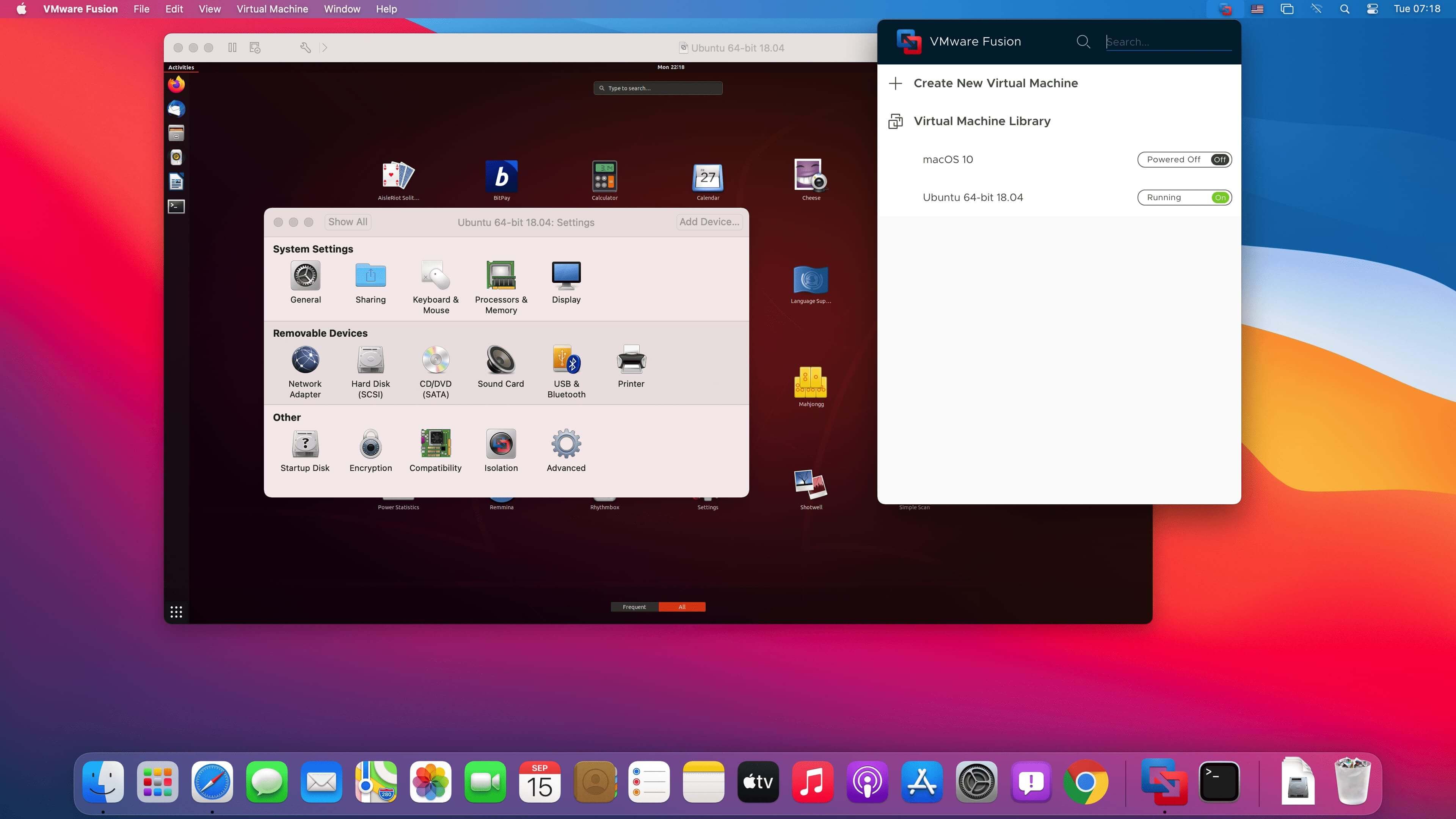

- Running vmware workstation on mac pro full#
- Running vmware workstation on mac pro pro#
- Running vmware workstation on mac pro windows#
Simply specify it in the Dockerfile like so: FROM - platform=linux/x86–64 centos:latestĪlthough it launches, everything is subsequently emulated INCLUDING your launched sub-processes. Docker as an x86–64 Emulatorĭid you know that Docker will run an x86–64 image on you Mac’s M1? Through the magic of QEMU you can launch your Docker container based on linux/x86–64 and QEMU will emulate it. provisioning host-accessible virtual networks for you), it wasn’t designed to run a whole OS under one container, and it’s more ‘fiddly’ than using VirtualBox as a provider.īut I got it to work. It’s not as versatile as VirtualBox (e.g. For this project, though it’s a decent alternative, especially if you configure it in the way I’m describing below. Introducing Dockerĭocker is an amazing product, but it does seem to have a bit of a love/hate relationship with engineers. Emulation adds a complex layer between the executable and the host OS, and there is likely to be some speed sacrifice when utilized.ĭepending on your use case this may either be negligible or acceptable to you, but as you’ll see further down I’ve personally hit significant performance issues using emulation.
Running vmware workstation on mac pro windows#
My main concern with these, especially after running Windows under UTM, is speed.

At the time of writing they are still in early development and either lack the support and features you have come to expect from VirtualBox, or are not supported as a provider by Vagrant. The shift to M1 stopped all that from working.Īlthough early days, we are seeing other virtualization providers such as VMWare and Parallels working on x86 emulation that will run on the M1. I run a number of development environments under guest CentOS VM’s, and the combination of Vagrant and VirtualBox made it a breeze to spin these environments up on demand, share boxes, and otherwise leave my host Mac untainted by each project. The biggest snag I hit was getting Vagrant to support the virtual machines I was running. If you just need to run a Windows app, it’s the best $59 you’ll spend. It apparently still relies on Apple’s own Rosetta 2, but my Windows app runs quickly and flawlessly in my native Mac environment. Time has moved on since then, and the miracle workers at Codeweavers have a product called Crossover that runs beautifully on an M1 Mac.
Running vmware workstation on mac pro full#
My Windows VM was there solely to run a Windows application that didn’t exist for Mac, and when Wine stopped running after 32bit emulation was dropped on Mac OS, I switched to running a full VM. So back to the drawing board… A side-note for Windows apps More importantly for me, UTM isn’t supported by Vagrant.
Running vmware workstation on mac pro pro#
It’s an amazing feet of engineering and I’m truly grateful to those who built it, but even on my souped-up Macbook Pro with 32Gb RAM, emulated Windows runs painfully slowly. It’s slow - much slower than running a Hypervisor. There are other helpful articles out there discussing this particular solution, but after installing UTM the command you are probably looking for is this: qemu-img convert -f vdi -O qcow2 myvirtualbox.vdi myreplacementvm.qcow2 It is also likely your only real option for Windows VM’s due to the fact there is no commercially available version of Windows (yet) that can be legally purchased to run on ARM. This is likely your best if you need to launch your virtual machine quickly with minimum changes. qcow2 and run them under a true emulator such as UTM. The ‘quickest’ option to get the machines running again was to migrate my VirtualBox. Moving away from VirtualBoxĪfter researching the topic in-depth at the end of 2021, I felt had relatively few viable options. The new M1 is a different chip-set entirely (ARM), and as VirtualBox is not a CPU emulator there is no way it can run those existing images for you. This is important because older Intel versions of the Mac were able to run x86–64 versions of your favorite apps directly on the underlying hardware. The main reason your virtual machines don’t run anymore is that VirtualBox runs as a hypervisor on your Mac, relying on the underlying processor to execute instructions rather than providing processor emulation through software. What nobody probably told you before you pressed the ‘Buy now’ button was that all your existing x86–64 machine you’d lovingly built using Vagrant and Virtualbox would no longer run! Why it doesn’t work? If you’ve landed on this article, you may have recently upgraded to a shiny new Macbook Pro or similar running the new M1 processor.


 0 kommentar(er)
0 kommentar(er)
